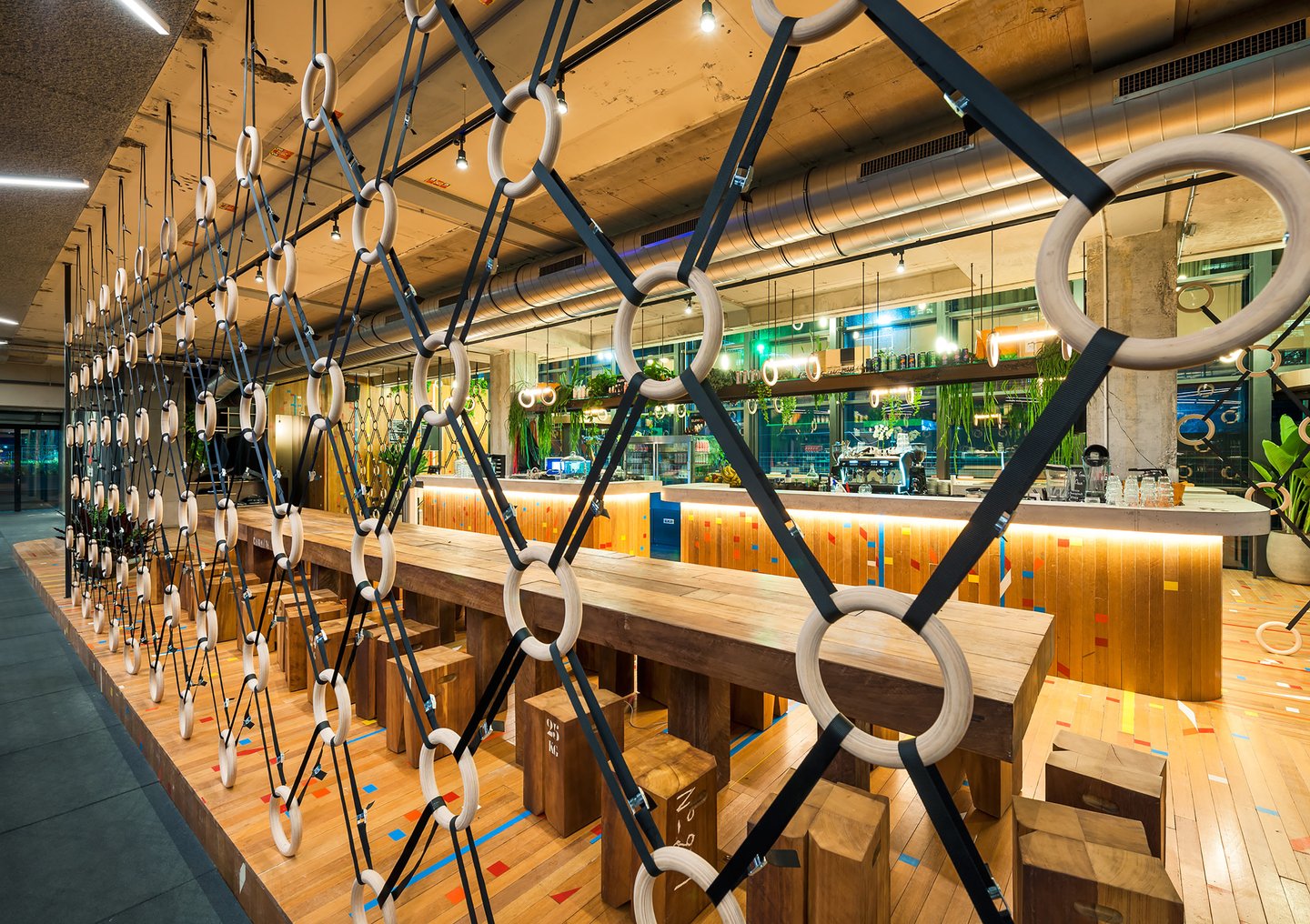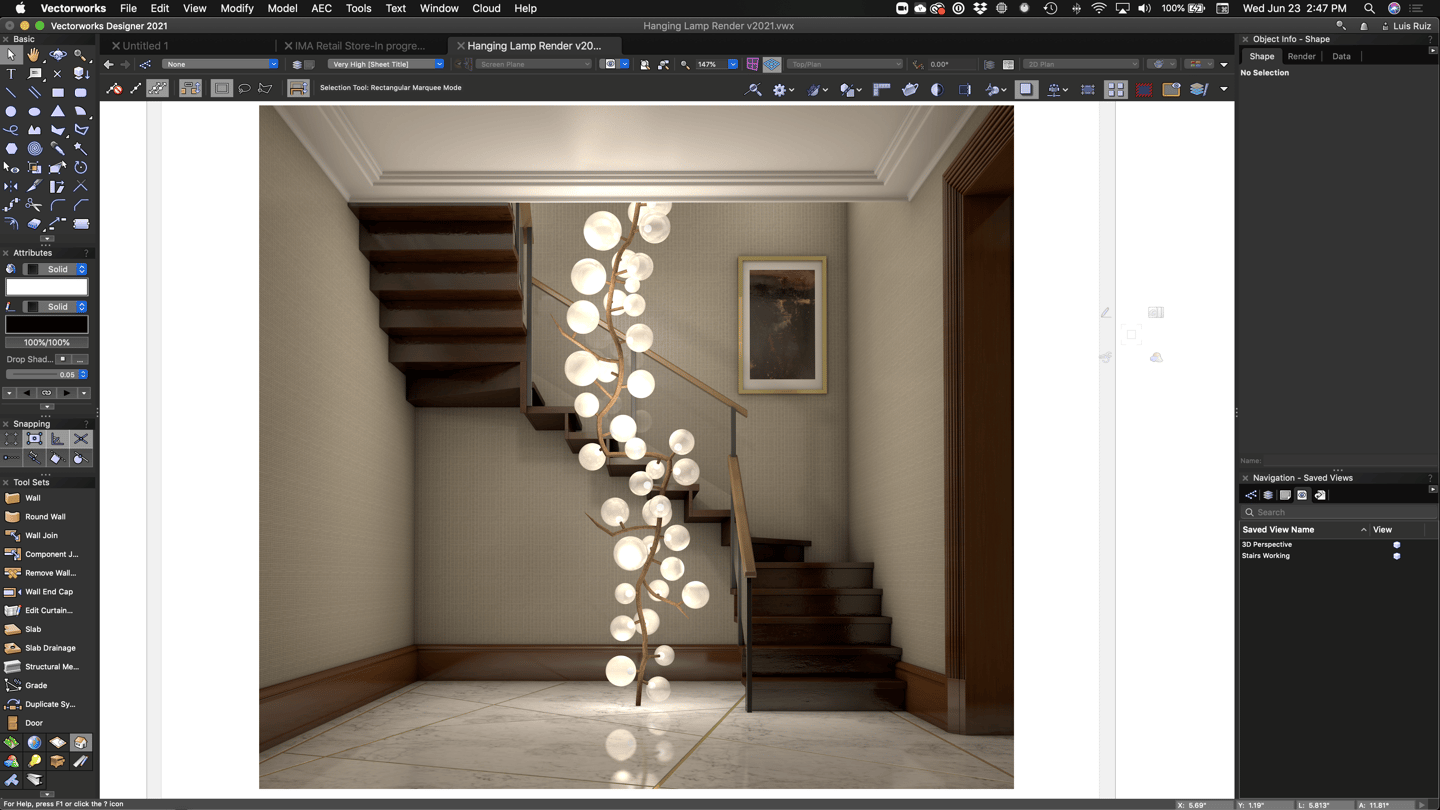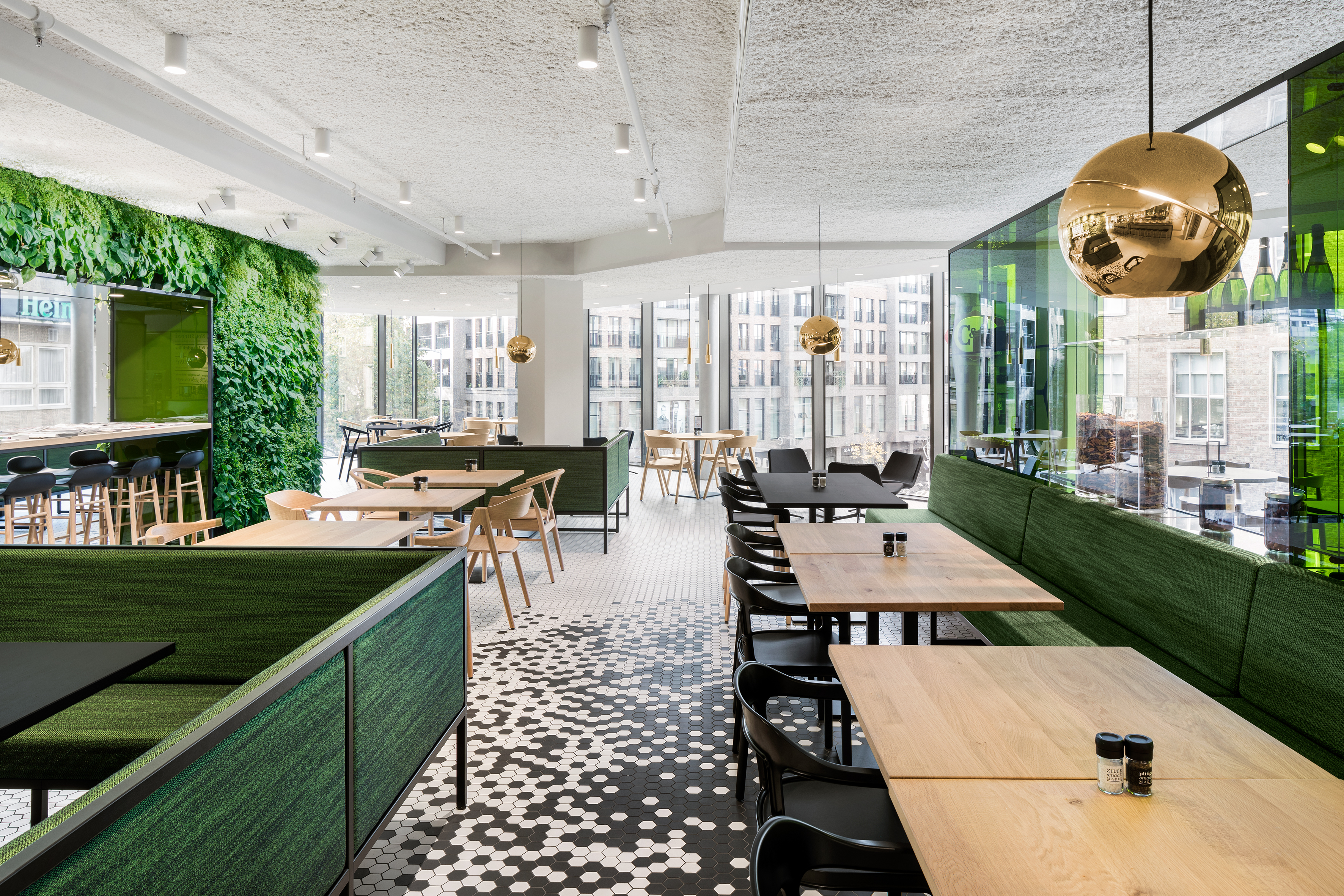What's biophilic design?
Biophilic design is a way of merging the boundaries between outside and inside. It's a design philosophy centered around the use of natural elements like plants, wood, water, and natural light.The International Living Future Institute further defines the style: "biophilic design is the practice of connecting people and nature within our built environments and communities."
But it’s also so much more.
Biophilic design can increase a designed space's impact on its inhabitants. Being in a space inspired by nature can promote well-being and productivity. In fact, the practice may even reduce a patient's recovery time in a health care facility!

The Kitchen Bijenkorf | Image courtesy of i29
Biophilic design is a beautiful marriage between form and function. In this post, we'll be discussing how biophilic design can inspire your next interior design, and we'll also be looking at some tips to create the trending designs in Vectorworks!
Biophilic Design Inspiration
While plants and other natural elements in an interior design are nothing new, biophilic design takes it one step further. It's not a means of decorating a space; it's a philosophy that requires necessary planning on your part.
Philosophies like biophilic design are a great starting point when beginning a new project. They might inspire you to try something you've never done before, or they may even inspire you to completely rethink what you can do with a design!
"There are so many design styles to choose from. They can have a huge influence on a design whether it’s the client that gets inspired or the designer working on the project," said Nicole Cave, interior designer and Vectorworks expert.

Vodelgym West | Image courtesy of Tank
When taking inspiration from design philosophies, it's important to remember that you don't have to fully replicate the style. Instead, take pieces from it. Mix and match elements with your own unique perspective.
So with biophilic design, remember that you don't have to build a whole temperate forest into your next project. Depending on the climate you're designing in, this may not even be possible!
Start small. Dedicate a wall to a "vertical garden," adjust your floor plan to allow for better natural light, or simply begin integrating more natural shapes into your design.
How to Create Biophilic Designs in Vectorworks
You may be wondering, "How do I create biophilic interiors?" Well, it's easier than you might suspect. Vectorworks will give you all the freedom you need to create biophilic designs!
Likely, your first consideration will be what materials you’re using in your environment. Within Vectorworks, you'll have access to a tremendous number of materials; and you can add additional realism to these materials by utilizing the Texture tool. With textures, you can carefully examine the visual impact different kinds of wood, greenery, and other materials will have on the aesthetics of your design.
When integrating natural greenery into your design, you’ll want to use symbols and the RenderMall Plant tool to bring your biophilic design to life.
Symbols are a great way to figure out the impact plants, bushes, or trees may have on the spatial relations of your design, while RenderMall Plants on the other hand, serve a more aesthetic purpose. These plants are beautiful 3D elements that will raise the overall quality of your rendering or presentation.
But, as we’ve mentioned, biophilic design isn’t just about incorporating plants into your design. The use of organic shapes is also an important part of this design philosophy.
You can easily create natural, free-flowing shapes in Vectorworks using NURBS (non-uniform rational basis spline) modeling. NURBS modeling can be done through the Convert to NURBS command, which can be applied to nearly any piece of geometry. "Even with something as basic as an extruded rectangle, you can create some really interesting shapes by simply converting it to NURBS and then reshaping it," said Neil Barman, Vectorworks Architect product specialist.
The 3D Power Pack under the Model drop-down menu contains a variety of NURBS-related commands. "These commands make a NURBS curve or surface do things for you," Barman said. "You can create draping surfaces, helixes, spirals, etcetera."

If you want greater detail in your natural design elements — for example, assorted data and scientific names — you’ll need to collaborate with a landscape designer. Or, you can make the upgrade to Vectorworks Design Suite, which has the capabilities of Vectorworks Architect, Landmark, and Spotlight.
And, if you’re still looking for more ways to spark your creativity, check out this post on five cinematic masterpieces that’ll inspire your next design to be just that: a masterpiece!

.svg)





